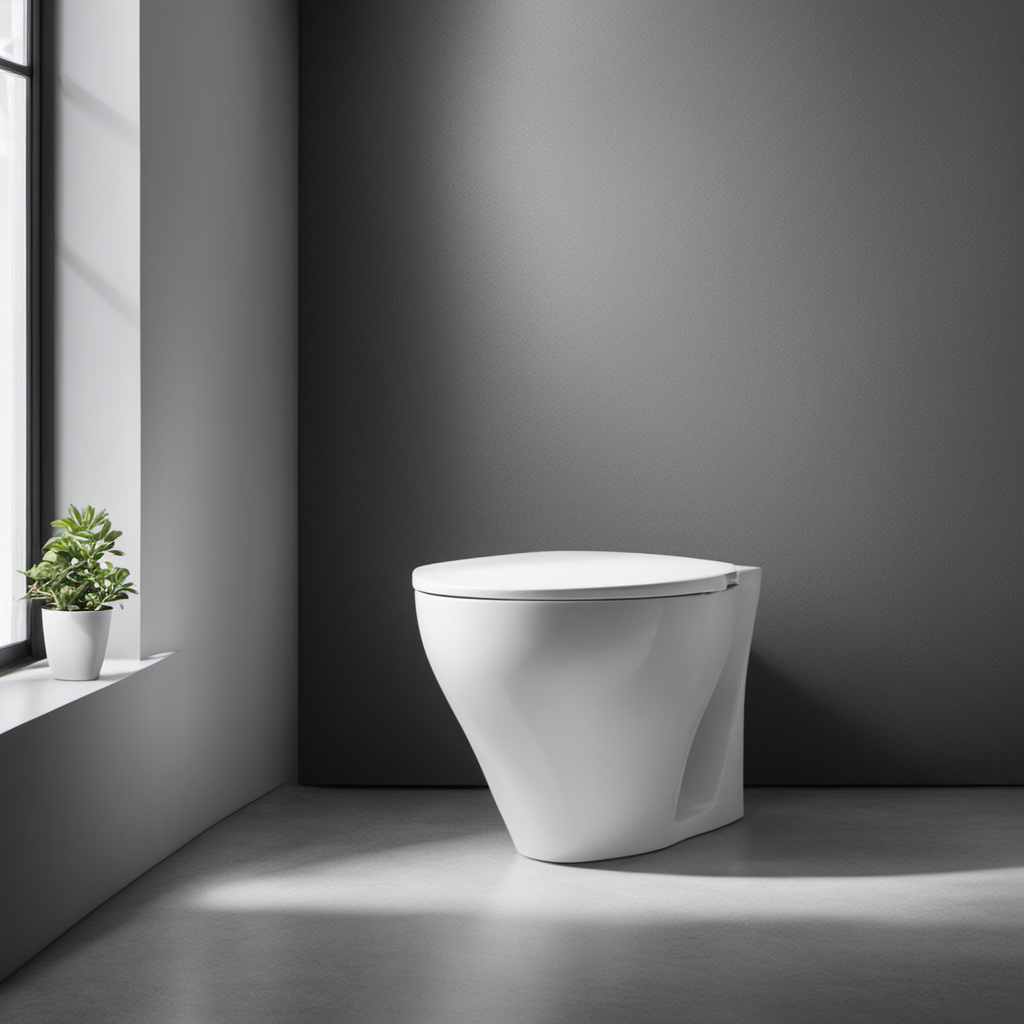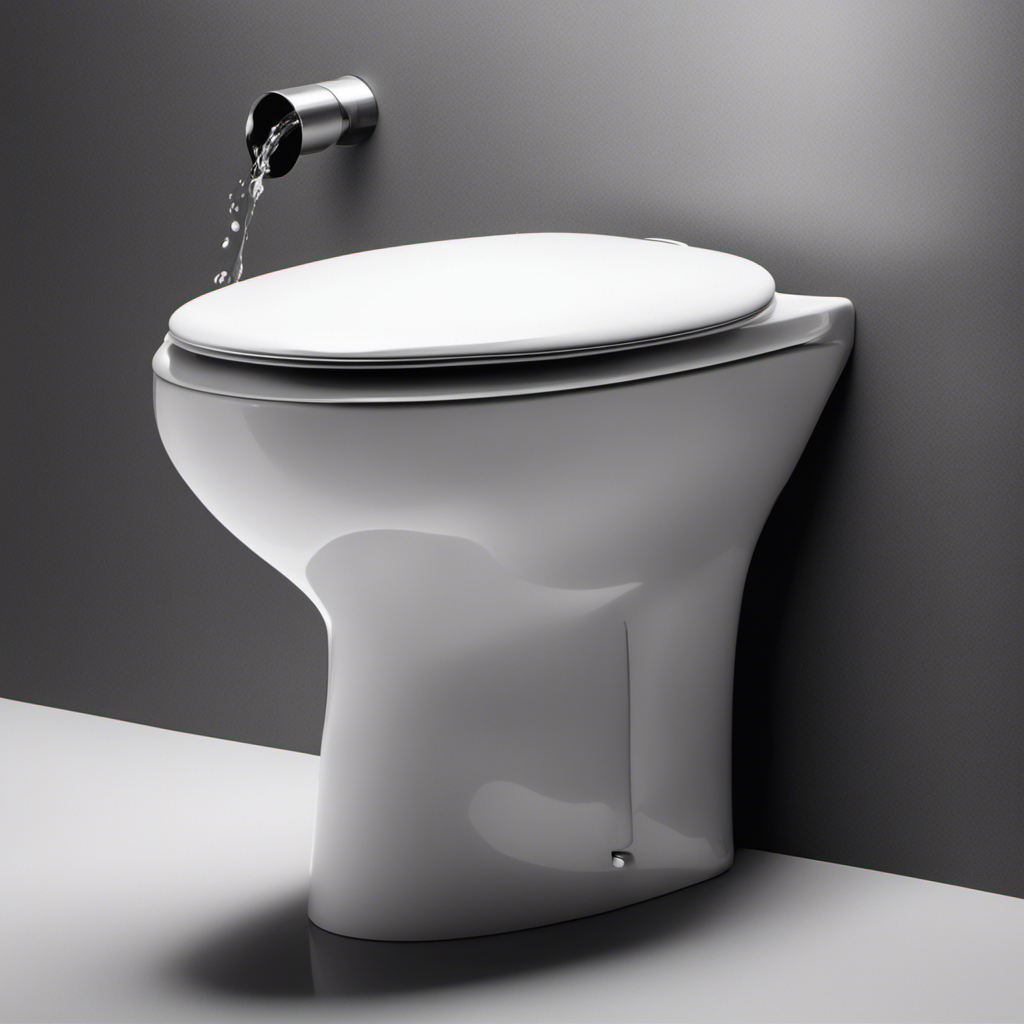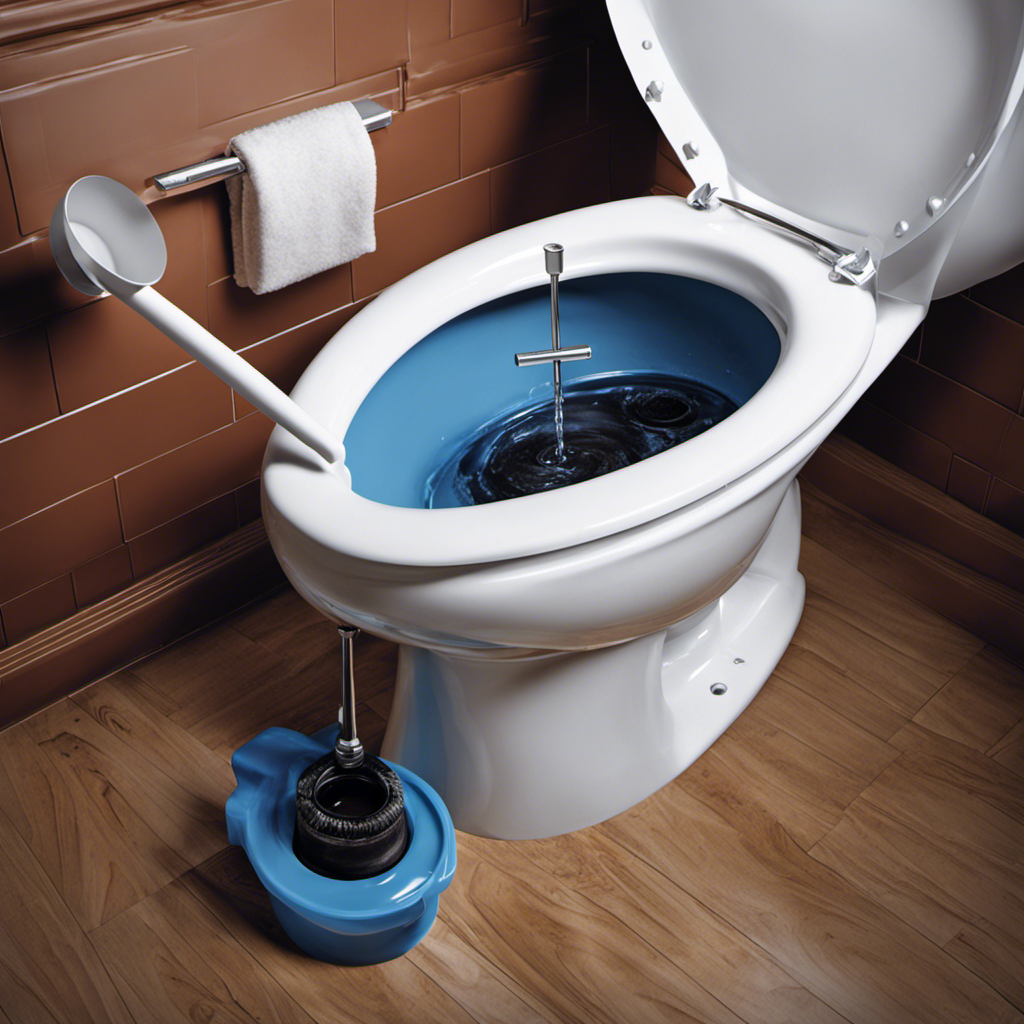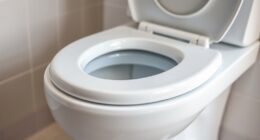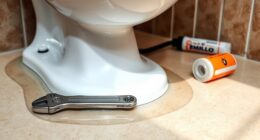Is your toilet bowl water not quite reaching the level it should? You may find yourself wondering why it’s not as high as it used to be.
Well, fear not! We’ve got you covered with this informative article that delves into the potential causes and common plumbing issues that lead to low toilet bowl water.
We’ll also guide you through how to check and adjust the water level, as well as offer solutions for increasing it.
Say goodbye to low toilet bowl water once and for all!
Key Takeaways
- Clogs in the pipes, accumulation of debris, mineral deposits, and foreign objects flushed down the toilet are potential causes of low toilet bowl water.
- Common plumbing issues that can lead to low toilet bowl water include clogged pipes, faulty fill valve, water supply issues, decreased water pressure, and problems with the main water line.
- Solutions for clogged pipes causing low water include removing toilet paper buildup, dislodging foreign objects in the pipes, and addressing mineral deposits from hard water.
- Solutions for faulty fill valve and water supply issues include checking the water supply line connection, adjusting the fill valve, ensuring the shut-off valve is fully open, and clearing any debris or blockages from the supply line.
Potential Causes of Low Toilet Bowl Water
One potential cause of low toilet bowl water is a clog in the pipes. When there is a blockage in the plumbing system, it can restrict the flow of water into the toilet bowl, resulting in inadequate flushing and low water levels.
Clogs can occur due to various reasons, such as the accumulation of debris, mineral deposits, or even foreign objects that have accidentally been flushed down the toilet. Troubleshooting low water levels requires identifying the location and severity of the clog.
You can start by using a plunger to try and dislodge the blockage. If this doesn’t work, you may need to use a plumbing snake to break up the clog or call a professional plumber to resolve the issue.
Common Plumbing Issues That Lead to Low Toilet Bowl Water
If you’re experiencing low water in your toilet bowl, there are a few common plumbing issues that could be causing this problem.
One potential cause is clogged pipes, which restrict the flow of water and result in lower water levels in the toilet bowl.
Another possible culprit is a faulty fill valve, which may not be allowing enough water to enter the bowl during the flush.
Lastly, a water supply issue could be to blame, such as low water pressure or a problem with the main water line.
Clogged Pipes Causing Low Water
The clogged pipes might be causing the low water level in your toilet bowl. When your drain is clogged, it restricts the flow of water, resulting in a decreased water level in the toilet bowl. To understand the impact of clogged pipes on your toilet, let’s look at the three primary causes of clogs and their consequences:
| Cause | Effect | Solution |
|---|---|---|
| Toilet Paper Buildup | Accumulation of toilet paper obstructs the pipes | Use less toilet paper or switch to thinner, biodegradable options |
| Foreign Objects | Items flushed down the toilet get lodged in the pipes | Avoid flushing non-flushable items and use a toilet plunger |
| Mineral Deposits | Hard water minerals can build up in the pipes | Regularly clean the toilet bowl and consider installing a water softener |
Faulty Fill Valve
To fix a faulty fill valve, start by checking the water supply line and ensuring it is securely connected. If your toilet bowl water is low, it could be due to a problem with the fill valve, which is responsible for refilling the tank after each flush. Adjust the fill valve by turning the adjustment screw clockwise to increase the water level. If this doesn’t solve the problem, troubleshoot other potential causes, such as a water supply issue.
Water Supply Issue
Check if the water supply line is properly connected to ensure consistent water flow. Water pressure problems can often cause low water flow in toilet bowls. Troubleshooting this issue requires a systematic approach to identify the root cause. Start by examining the water supply line for any leaks or blockages. Ensure that the shut-off valve is fully open and the supply line is securely connected to the toilet tank. If the water supply line appears to be in good condition, the issue might lie within the fill valve or the water pressure itself. To further troubleshoot, refer to the table below for possible causes and solutions to low water flow in toilet bowls.
| Possible Causes | Solutions |
|---|---|
| Partially closed valve | Ensure the shut-off valve is fully open |
| Clogged supply line | Clear any debris or blockages from the supply line |
| Low water pressure | Check the overall water pressure in the house and make adjustments if necessary |
How to Check and Adjust the Water Level in Your Toilet Bowl
Make sure you know how to adjust the water level in your toilet bowl so you can fix the low water issue. Proper toilet bowl maintenance is crucial to ensure a smooth and efficient flushing experience. Troubleshooting toilet bowl water levels requires a systematic approach.
Here’s a step-by-step guide to help you check and adjust the water level in your toilet bowl:
- Step 1: Remove the tank lid and locate the water level adjustment screw or valve.
- Step 2: Turn the adjustment screw or valve clockwise to raise the water level or counterclockwise to lower it.
- Step 3: Flush the toilet and observe the water level in the bowl.
- Step 4: Repeat the process until you achieve the desired water level.
Reasons Why Your Toilet Bowl Water Keeps Draining Low
If you’ve noticed that your toilet bowl water keeps draining low, there could be a few reasons behind it.
One possible cause is the presence of hard water deposits in your toilet bowl. Hard water contains minerals like calcium and magnesium, which can build up over time and obstruct the normal flow of water. These deposits can cause blockages in the toilet’s pipes or trapways, leading to reduced water levels.
Additionally, hard water can also cause discoloration of the toilet bowl water, giving it a yellow or brown tint. To address this issue, you can try using a toilet bowl cleaner specifically designed to remove hard water deposits.
Regular maintenance and cleaning can help prevent these deposits from accumulating and ensure proper water flow in your toilet bowl.
Solutions for Increasing the Water Level in Your Toilet Bowl
To increase the water level in your toilet bowl, try adjusting the float in the toilet tank. Here are some solutions for troubleshooting low water levels in your toilet bowl:
-
Adjust the float: The float is a mechanism that controls the water level in the tank. By adjusting it, you can increase the water level in the toilet bowl.
-
Check the water supply valve: Make sure that the water supply valve is fully open. If it’s partially closed, it can result in low water levels.
-
Clean the rim jets: Sometimes, mineral deposits can clog the rim jets, preventing proper water flow. Clean them thoroughly to improve water level.
-
Inspect the fill valve: The fill valve is responsible for refilling the tank after each flush. If it’s malfunctioning, it can cause low water levels in the toilet bowl.
By following these troubleshooting steps, you can increase the water level in your toilet bowl and prevent further issues.
Now, let’s move on to some tips for preventing low toilet bowl water levels.
Tips for Preventing Low Toilet Bowl Water Levels
One way to prevent the water level in your toilet bowl from becoming too low is by regularly cleaning the rim jets.
The rim jets are small holes located under the rim of the toilet bowl that help to create the swirling action when you flush.
Over time, these jets can become clogged with mineral deposits and debris, which can restrict the flow of water and lead to low water levels in the bowl.
By cleaning the rim jets at regular intervals, you can ensure that they are free from any obstructions and allow for proper water flow.
This simple maintenance task can help to prevent low water levels and ensure that your toilet is functioning optimally.
Conclusion
In conclusion, if you find yourself wondering why your toilet bowl water is low, there are several potential causes to consider. Common plumbing issues such as a clogged toilet, a faulty fill valve, or low water pressure can lead to low water levels in your toilet bowl.
By checking and adjusting the water level, you can ensure proper functioning. Interestingly, did you know that a typical toilet bowl can hold around 1.6 gallons of water? Understanding this statistic can help you visualize the importance of maintaining adequate water levels in your toilet bowl.
